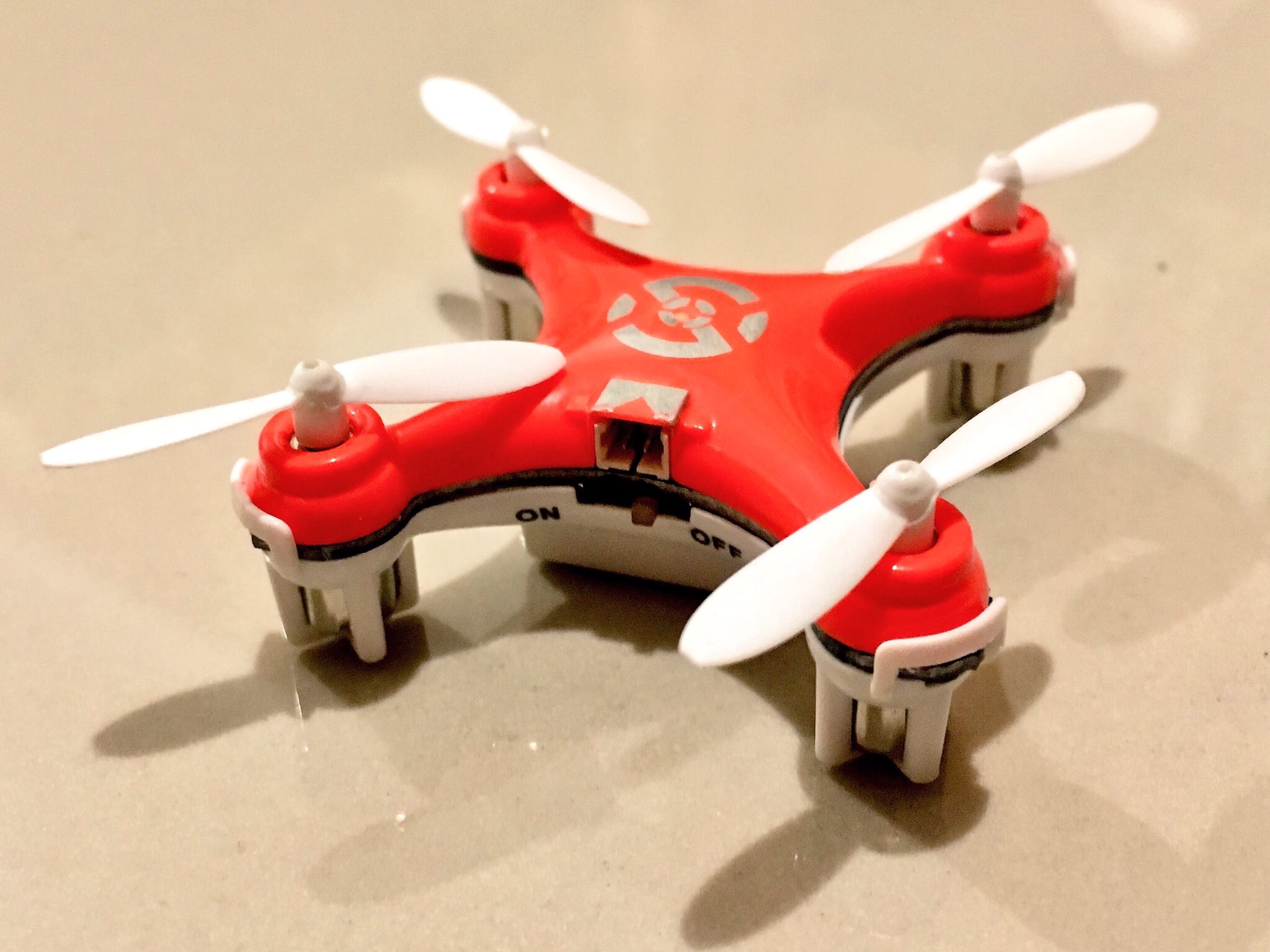This tiny guy is LOADS of fun!
The Cheerson CX-10 is a toy quadcopter. It’s so small, it fits the palm of your hand! It comes in a variety of fun colors (pink, green, orange, blue). As you can see, I got an orange. The battery is built-in (good for 3-5 minutes flying) but the USB charger recharges it in just 30 minutes. It also comes with 4 extra propellers which is handy since you WILL break propellers. Finally, there’s a basic user manual. Yeah, you should RTFM!
Thanks Cez and Euge!
